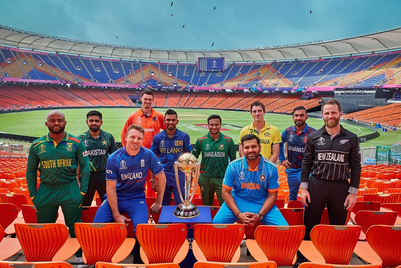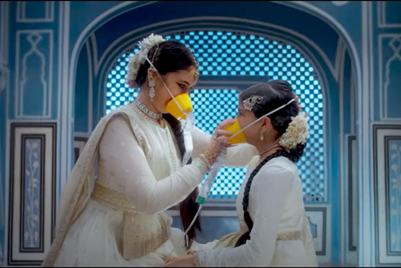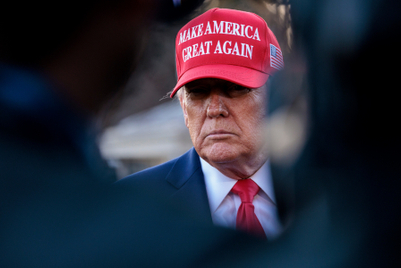Thursday night was a night to remember at The Taj Mumbai. At Sotheby’s first ever India auction, two Air India posters came under the hammer. 40x30 inches each in size, both printed lithographs dated back to 1953 (Prague) and 1956 (Paris), and were stamped Bombay Fine Art/Bombay 27, presumably signaling the offset press where they were printed 60 years ago. They were listed in the catalogue for an estimated INR 60,000-90,000. The lot sold for INR 8 lacs, plus 25% buyer’s premium… effectively INR 10 lacs. The creator of the two posters, Nargis Wadia, the Grand Old Dame of Indian Advertising was there in the audience to clap and cheer as the bids closed, creating surely a record of sorts for advertising memorabilia in India.
Actually, the best description of the posters, their historical evolution and importance is best described in the Sotheby’s catalogue.
“The Air India poster is a category in and of itself. Advertising in India in the 1950s saw a paradigm shift which spoke an entirely different language to pre-independence advertising trends. It meant that visual communication was no longer about merely enlarging an image and superimposing it on a poster, it was about introducing an element of graphic or coloured expression, almost like a mural. Colour and composition therefore became more important than the drawing. It is for this reason that artists such as Nargis Wadia, who express themselves in a delicate graphic style used formats of a limited size because they were meant to be seen and understood from a distance and text had to be kept to a minimum. After deciding on the text and its arrangement, equal emphasis was laid on the lettering as everything in the composition must contribute to that conciseness that gives an Air India poster its unique, witty character.
Some of Wadia’s most well-known posters are those advertising flights to Switzerland and Germany, but none are as famous and talked about as the Paris poster. It is vibrant, bold and ahead of its time, with the style of lettering inspired by cabaret dancers at the Crazy Horse Club in Paris. Originally, the colourful, curvaceous legs of the letter ‘I’ were dotted by the Maharajah’s head- a great example of the tongue-in-cheek humour characteristic of Wadia’s posters. While it won her first prize at the prestigious Commercial Artist’s Guild awards, the cheeky feature of the poster did not go down well with the Indian Parliament. Says Wadia about Paris, “This is an insult to the nation, they said. They wanted it taken down. Even JRD Tata asked her to “tone it down” she says, “JRD asked me to tone the imagery down, the original design was even more risqué…”
Air India made its first international flight in 1948. The 5000-mile journey from Mumbai to London made by the new Princess Malabar aircraft ushered in an unprecedented era of international air travel for India. Under the leadership of commercial director Bobby Kooka, the Air India in-house art studio took on the responsibility of promoting the luxurious hospitality of Air India across the country, and the world – their mascot, the world famous ‘Maharaja’, went on to create some of the best promotional material in the field at the time, and cemented the Maharaja’s place as the pioneer of luxury air travel in India, and a universal symbol of indulgence and adventure.”
I was sitting just behind Nargis at the auction. She was accompanied by another advertising veteran, Dara Acidwala, and his wife. Even at her age (she is 1935 born) Nargis was a picture of self-confidence and all smiles. I asked her how the posters found their way to Sotheby’s. She said it was a chance meeting with one of Sotheby’s local staff at a party. They got talking about advertising, then Air India, then the posters. She was in fact surprised when Sotheby’s offered to auction the posters.
The Sotheby’s sale should encourage more of advertising’s senior folks to rummage through drawers and cupboards and find some fine examples of great advertising from the past. At the prices the posters fetched, there is a lot of money to be made from memorabilia. Apart from that, it is the recognition of advertising as an art form. It was good to see Nargis Wadia rubbing shoulders in the catalogue with Tyeb Mehta, Maqbool Fida Husain, Amrita Sher-Gil and Satish Gujral!
(Sandeep Goyal loves writing about these little oddities and experiences that make advertising the profession it is.)




.jpg&h=334&w=500&q=100&v=20250320&c=1)
.jpg&h=334&w=500&q=100&v=20250320&c=1)



.jpg&h=334&w=500&q=100&v=20250320&c=1)
.jpg&h=334&w=500&q=100&v=20250320&c=1)


.jpg&h=334&w=500&q=100&v=20250320&c=1)

.jpg&h=268&w=401&q=100&v=20250320&c=1)



.jpg&h=268&w=401&q=100&v=20250320&c=1)


